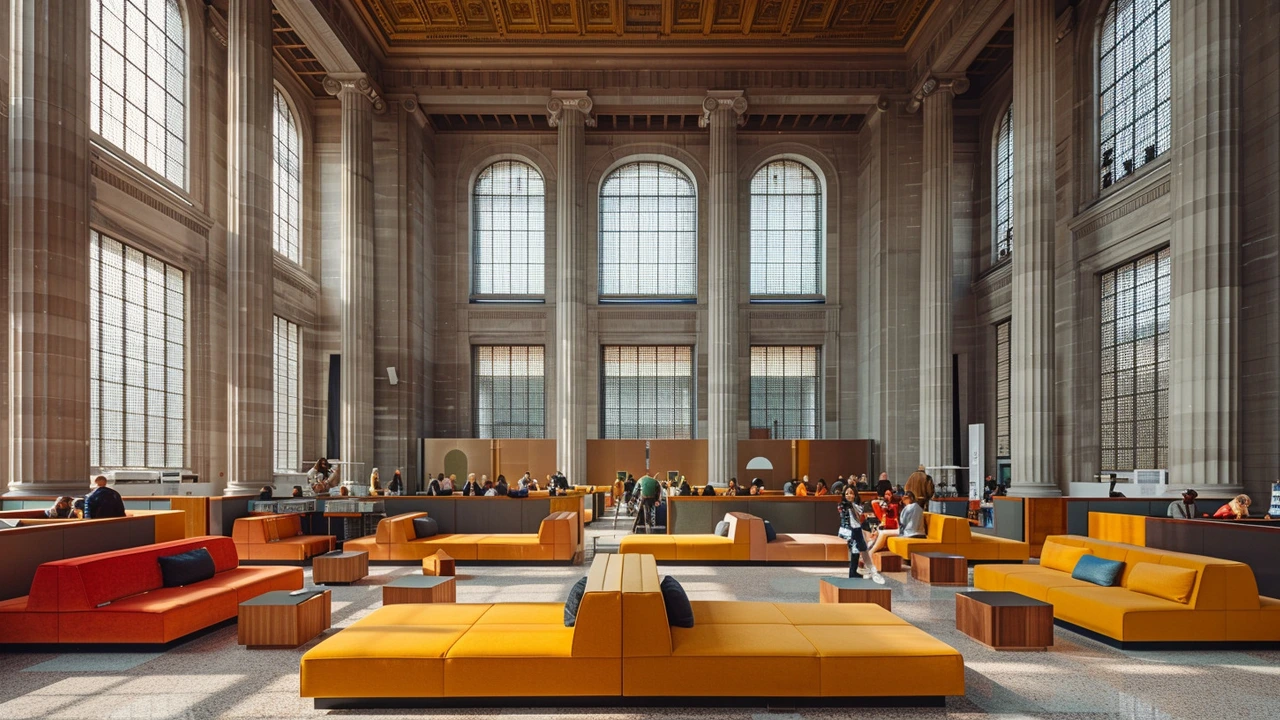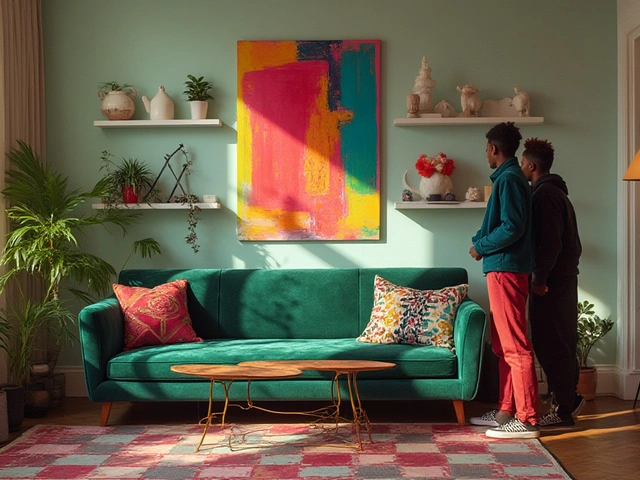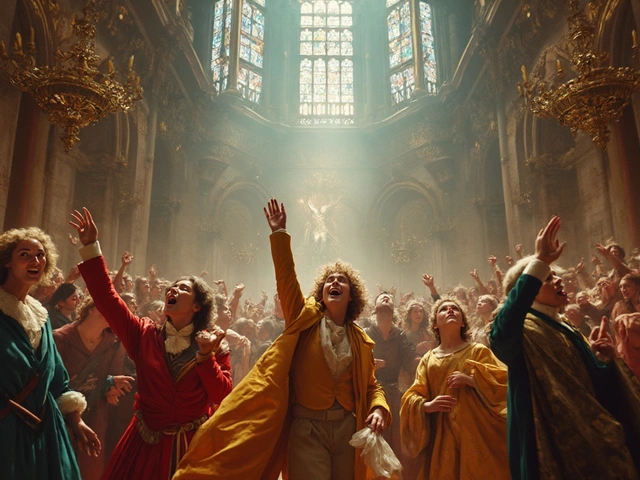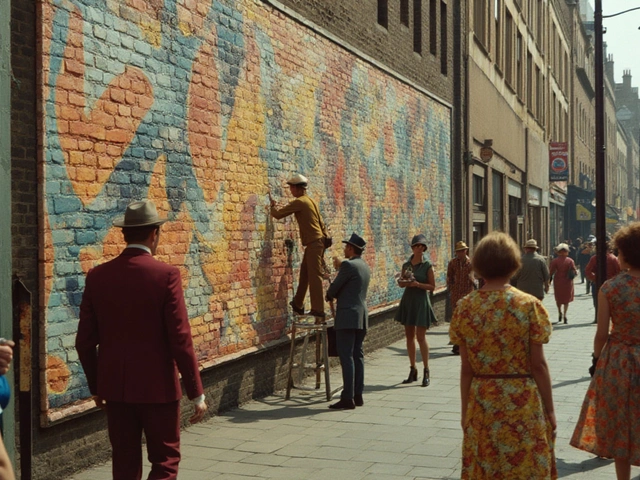When we talk about 'De Stijl', we dive deep into a movement that reshaped the visual and architectural landscapes of the early 20th century. Have you ever seen those captivating artworks and buildings characterized by horizontal and vertical lines, and primary colors? That's De Stijl for you - a movement that embraced an abstract, minimalist aesthetic, seeking to express the fundamental aspects of beauty.
It all began in the Netherlands around 1917, when a group of artists and architects decided that art needed a fresh perspective, one that emphasized simplicity and rationality. They believed in reducing elements to essentials, a philosophy that not only influenced art but also permeated furniture design, graphic design, and even urban planning.
Origins and Philosophy
The roots of the De Stijl movement trace back to the tumultuous atmosphere of Europe during World War I, an era thirsty for change and fresh ideologies. Amidst the chaos, a group of Dutch artists and architects craved a new form of art that transcended the traditional to focus on the basics of color, form, and line. This desire for a fundamental transformation is what ignited the De Stijl, or 'The Style' in Dutch. The movement thrived on the principles of geometric abstraction and simplicity, pushing against the ornate styles that dominated the pre-war period.
The philosophical backbone of De Stijl was heavily influenced by the ideas presented in neoplasticism, introduced by Piet Mondrian. Neoplasticism promoted a style where only horizontal and vertical lines and primary colors would be used to construct compositions. This stringent restriction aimed to achieve a visual harmony in art that could resonate universally, mirroring a utopian ideal of balance and order in society. The De Stijl artists believed that through the reduction of elements to their essentials, they could express a purer reality, stripping away the chaos of the visible world.
As these revolutionary ideas took shape, De Stijl's philosophy was crisply encapsulated in the designs and writings of Theo van Doesburg. Van Doesburg was not only a pivotal figure in the movement but also served as its vocal spokesperson, promoting the De Stijl theories through the publication of a journal dedicated to the movement's ideals. His publication was instrumental in spreading the movement’s core ideas across Europe, garnering a wider audience and influencing a myriad of artistic and architectural projects. De Stijl's reductionist theories found resonance in a post-war society eager for a new order, and soon, its influence pervaded both aesthetics and the broader philosophical dialogue of the time.
Reflecting on this era, the impact of De Stijl philosophy went far beyond the borders of the Netherlands, inspiring creatives and thinkers globally. It fostered a discourse on the potential of art as a vehicle for societal change, reshaping public perceptions and expectations of what art could convey and achieve. The emphasis on clarity, order, and reduced form in a chaotic world provided a grounding force, a clear vision amid the complexity of early 20th-century societal shifts.
Key Figures
The De Stijl movement, though broad in its scope, was fundamentally influenced by a few visionary artists and architects whose dedication reshaped the world of art and design. Among them, Piet Mondrian and Theo van Doesburg stand out as pivotal figures. Piet Mondrian, originally a figurative artist, underwent a transformational phase influenced by Cubism before proposing his well-known abstract compositions of grids and primary colors. His approach was not just about art for art's sake but was deeply philosophical, seeing this simplification as a way to achieve a universal aesthetic.
Theo van Doesburg was another seminal figure who not only contributed through his paintings but also through his writings and teachings. He founded 'De Stijl' journal, which became a vehicle for spreading the movement's ideas. Van Doesburg was more flexible in applying De Stijl principles and experimented with diagonal elements, which Mondrian disapproved of. However, this tension between the two artists led to a richer dialogue within the movement, influencing its direction and application. Van Doesburg's collaboration with architect J.J.P. Oud also helped bridge the abstract principles of De Stijl with practical architectural applications, marking the beginning of modern Dutch architecture.
Besides Mondrian and van Doesburg, other artists like Bart van der Leck and Vilmos Huszár also contributed significantly to the movement. Van der Leck's use of primary colors and distinct forms helped shape De Stijl's visual language, while Huszár's graphic design work expanded its influence beyond traditional art forms, into typographic and industrial design, showing how these principles could be applied across various disciplines. These key figures did not work in isolation but collaborated and often debated each other, pushing the boundaries of what art could be and setting foundational stones for future movements like Bauhaus and Minimalism.
De Stijl in Modern Design
The influence of De Stijl extends far beyond its historical period and into the heart of modern design. If you've ever admired the clean lines and bold color contrasts in contemporary furniture, you've felt the lingering spirit of De Stijl. Though the movement officially dissolved in the 1930s, its principles continue to inspire architects, graphic designers, and artists around the world. The emphasis on primary colors, straight lines, and the balance of forms is evident in everything from corporate logos to household interiors.
The simplicity of De Stijl is not merely an aesthetic choice; it's a way of thinking about space and functionality. In architecture, this means buildings are designed not just to please the eye but to serve human needs efficiently and beautifully. For instance, the use of large, unadorned windows and open interior spaces in modern homes can be traced back to De Stijl's influence, marrying form with function in living spaces that feel both expansive and inviting.
Graphic design also owes a profound debt to De Stijl, with its clear influence seen in the minimalist advertisements and product designs that dominate the market today. The bold, visual impact of De Stijl is perfectly suited to the needs of modern advertising—communicating messages quickly and effectively through strong, recognizable imagery. This approach not only catches the eye but also cuts through the noise of an oversaturated media landscape.
Furthermore, modern interior design frequently incorporates De Stijl's DNA, focusing on the arrangement of basic shapes and colors to create harmonious and functional living spaces. The concept of 'less is more' takes a page from De Stijl's book, where each element of the decor is chosen to support a clear, cohesive aesthetic experience. The result is spaces that feel intentional and balanced, proving that the principles of De Stijl continue to resonate with fundamental human preferences for order and clarity.
Practical Applications of De Stijl Principles
The principles of De Stijl, characterized by their simplicity and emphasis on functionality, did not merely stop at influencing artworks and architecture; they extended deeply into various practical applications enhancing everyday life. Take, for instance, the world of furniture design. The iconic Red and Blue Chair designed by Gerrit Rietveld is not just a piece to admire but showcases the functionality masked in abstract geometry. His design, emphasizing flat planes and primary colors, aligns perfectly with De Stijl's vision, integrating art into daily living scenarios.
In interior design, De Stijl's influence is evident in the use of open spaces and clear alignments. Interiors designed under this style foster a harmonious environment, where furniture and structural elements coexist without clutter. By limiting the palette to primary colors, and using only horizontal and vertical lines, spaces decorated in the De Stijl fashion appear more organized and visually accessible. It's fascinating how this century-old design philosophy still helps in creating spaces that are not only beautiful but practical.
Moreover, De Stijl's principles have been applied in graphic design, where they contribute to the creation of visually compelling and easy to understand graphics. The emphasis on asymmetry, rectilinear forms, and stark contrasts improves user experience by enhancing readability and viewer engagement. It's intriguing to observe how these principles govern the effectiveness of minimalist graphic design even in digital platforms, from websites to app interfaces.
Lastly, the educational sector has embraced elements of De Stijl in teaching visual composition and design principles. By exploring the balance and harmony characteristic of De Stijl, students are equipped with an understanding of how simplicity can lead to more profound artistic expressions. Here, the lessons of De Stijl transcend their historical roots, continuing to inform contemporary aesthetics and functionality in various fields.




